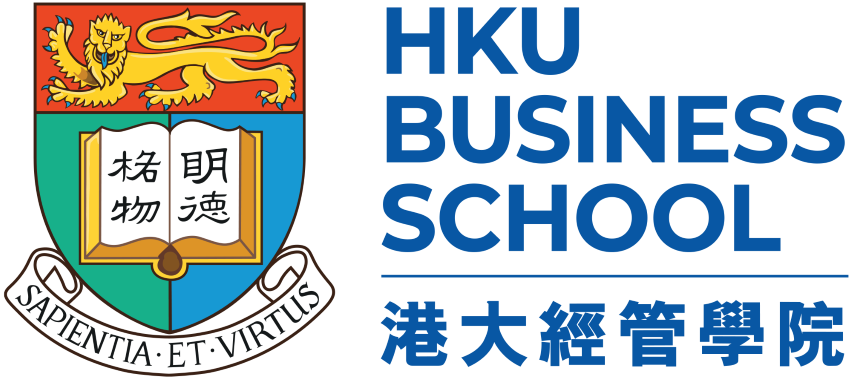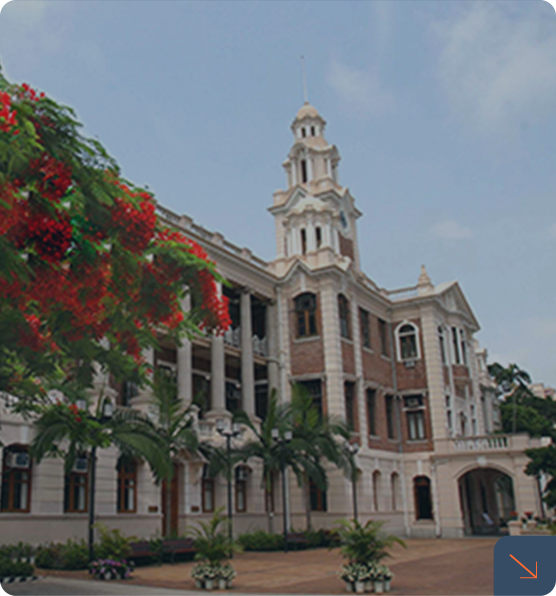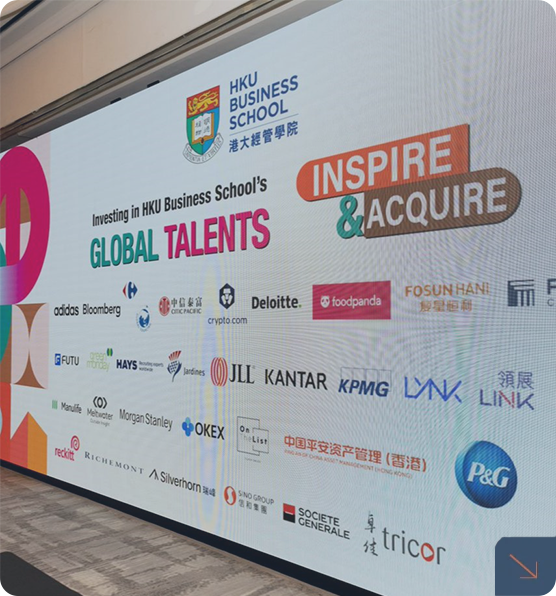Finding Hong Kong’s Place in the World of English
Ever mindful of the impression the Pearl of the Orient gives to the outside world, Hong Kong people naturally pay close attention to all sorts of international league tables. What’s most encouraging is that, in a tiny place like Hong Kong, local higher-education institutions fare impressively in various global university rankings, rivalling top universities in Europe and the US in academic performance. While Hongkongers are relishing these achievements, an education league table focusing on English language skills is hardly in the public eye.
According to the EF English Proficiency Index published in late 2023, among the surveyed 113 countries and regions (excluding the UK, the US, Canada, and Australia), Hong Kong ranks 29th and is in 4th place among 23 Asian countries and regions, lagging far behind Singapore, which ranks 2nd on the global list and top in Asia. In the Index, the SAR also trails behind the Philippines, which ranks 20th worldwide and 2nd in Asia, as well as Malaysia, which ranks 25th worldwide and 3rd in Asia (see 【Note 1】).
To Hong Kong, once the crown jewel of the Commonwealth and now striving to be a leading international metropolis, the above results are of course less than ideal. What is most worrying is that English proficiency among the 18–20 age group has been sliding and that is also my impression as a teacher at The University of Hong Kong. Among undergraduates studying economics, business administration, and finance, many local students keep quiet in class and even struggle to convey their meaning in assignments due to low English proficiency. As it appears, they fall behind international students and some counterparts from the Mainland.
Whether an individual can be regarded as talented or a city as a mecca of some sort cannot be determined by English proficiency alone. Among developed economies other than Hong Kong, Singapore and Japan stand out as two distinctly different examples in Asia.
“Singlish”: one of a kind
I am not the first to say tongue in cheek that Singaporeans have their localized way of speaking English. Nor is such a comment meant to be derogatory at all. In an episode of “The Story of English”, a popular Emmy-winning TV series launched by the BBC in 1986, the future of the English language in Asia was explored and Singaporean English was referred to as “Singlish”. Finding this a disgrace, many Singaporeans were much offended. In a public speech in 1999, Lee Kuan Yew, the founding prime minister of Singapore, stressed the importance of speaking and writing standard English so that “we can understand the world and the world can understand us” (see 【Note 2】).
The English attempt to take the mickey out of the use of Singlish galvanized Singaporeans into action to improve their English standards. So government officials were required to attend training courses to brush up on standard English. The Straits Times started hiring English experts as columnists to promote the learning of standard English. The engineered effort resulted in a nationwide English-learning trend. Meanwhile, as the English language continued to localize, Singaporeans gradually got used to using Singlish as a colloquial style of English. Even such vibrant Singlish phrases as “car here, car there” have found their way into the poems written by local cultural figures.
Amid a multitude of dialects in use and without a dominant national tongue, the Singaporean government has established a language framework where Putonghua is primarily used for domestic communication while English is used for international communication. This bilingual approach has been instrumental in the country’s economic rise. In the wake of the COVID-19 pandemic, both Singapore and Hong Kong have become global knowledge exchange hubs. As I have been told by various famous scholars, they feel more at home in the linguistic environment of Singapore.
Japanese English: silence is golden
Unlike the Singaporeans, who have the drive to speak English, most Japanese people do not speak the language. The Japanese are well known for their civility and meticulousness. More often than not, travellers are impressed by the hospitality and attentiveness of the local people. Foreigners, however, may find it an uphill battle to overcome the language barrier. At drugstores located in big cities, where many Chinese students work as part-timers, communication is not a problem. Otherwise, be it at hotels or restaurants, it is not easy to find someone who can speak decent English. On a business trip to Osaka in the depth of winter one year, I asked for directions at a train station. Five or six staff members there came out one after another. After taking a look at the address in my hand, they all smiled and spoke the same phrases in Japanese, leaving me completely clueless all along. Finally, a helpful gent at the station braced the heavy snow and insisted on walking with me all the way to my destination for the next 10 minutes or so before heading back by himself.
In fact, industrial cities like Osaka aside, even in Kyoto, an ancient capital and world-renowned tourist city, only a few Japanese people can communicate in English. As a customer enters a quaint old shop in enthusiastic anticipation, a female shop assistant will diligently introduce the products in Japanese. Even though seeing the customer does not understand at all, she will nonetheless go on explaining with patience, perhaps hoping that “sincerity can move even metal and stone” — that after listening to Japanese some more, coupled with the help of non-verbal communication, the customer will eventually understand what she means. Having said that, I do not find it worthwhile to apply such a craftsman-like spirit to luring a potential customer.
Why are there so few English speakers among the Japanese? I have posed this question to my Japanese friends. The most common explanation is that the Japanese and English languages are like chalk and cheese in their differences. That is why they find it so hard to learn English.
This reminds me of a story in the biography of mathematician Kunihiko Kodaira, the first Japanese recipient of the Fields Medal. After the Second World War, to resolve some mathematical problems, he accepted the invitation to be a visiting scholar at the Institute for Advanced Study in Princeton, US. No matter how hard he tried, he simply could not express himself well in English. During class, he only wrote equations and proofs on the blackboard, without giving students any oral explanation. To everyone’s surprise, the non-verbal teaching approach was a great hit among students because they often found it hard to follow the American and English professors who spoke too fast. In his biography, Kodaira mentioned an amusing anecdote about Shinichiro Tomonaga (1965 Nobel prize in physics laureate), a visiting Japanese scientist to the US at the time. In a desperate bid to improve his English, Tomonaga was said to replace his teeth with a full set of American-made dentures.
Even geniuses like Kodaira and Tomonaga could not speak English, let alone mere mortals among the Japanese! Apparently, the two languages are really a world apart from each other. However, I find this explanation hard to accept because many of my Japanese friends speak fluent English. At the end of the day, the main reason is that the economic return on mastering English is low in Japan. Given the much greater importance of exports to the Japanese economy compared to imports, coupled with the high quality of domestic products, the Japanese have little interest in foreign products. Nor are Japanese parents keen on sending their children to study overseas. Hence they never get to develop an affinity with English. Furthermore, since the Meiji Restoration, Japanese elites have been hard at work translating Western scientific knowledge as well as the latest trends in arts and culture into Japanese, expediting the pace of localization on these fronts. As a result, despite the inability among the general public to speak fluent English, Japan is one of the countries worldwide most steeped in Western culture. Not only has it been a cradle of talent in science and technology, but it has also nurtured numerous maestros in music, architecture, and arts who have taken the West by storm.
Chinglish: a mix of Chinese, English, and local flavours
Singaporeans bear resemblance to the Japanese in having an extreme attitude towards English. The former takes the language on board completely, popularizing its daily use to the extent of creating a hybrid known as Singlish. In contrast, the latter gives English a wide berth, relying on Japanese elites to localize the world’s advanced science and arts. In comparison, spoken English in Hong Kong is much more of a mixed bag, with all sorts of regional accents. Be it standard English with a London Oxbridge accent or New York-Boston accent, English with a South Asian or Southeast Asian accent, or that with a Jiangsu, Zhejiang, or Shanghai accent, or even a local Cantonese accent, you name it, we’ve got it!
While a diverse language environment is a good thing, without a linguistic mainstay and combined with the dilution effect of daily life, a jumble of styles can be confusing. In the last century, as an important pathway to upward mobility, English learning was popular among Hong Kong people. Thanks to tireless encouragement from bilingually proficient cultural figures from the older generation, more and more locals have taken to English learning. The environment for learning English today is markedly better than before. Regrettably, without motivation or role models, young people who are unwilling to work hard to brush up their language skills will only find it hard to master English.
Nowadays, while Westerners find Hong Kong too Westernized and Mainland Chinese find Hong Kong too Chinese, Hongkongers find our city not localized enough. To truly embrace the unique characteristics of East meets West, language learning is the place to start. It behooves various sectors of the community to support young people to become bilingual in Chinese and English.
Language learning is not a zero-sum game. Only with the right blend of bilingualism, coupled with a solid foundation in Cantonese, will Hongkongers be able to enjoy an all-embracing advantage all of their own.
【Note 1】: https://www.ef.com/assetscdn/WIBIwq6RdJvcD9bc8RMd/cefcom-epi-site/reports/2023/ef-epi-2023-english.pdf
【Note 2】: https://www.nas.gov.sg/archivesonline/data/pdfdoc/1999081404.htm
Professor Yanhui Wu
Associate Professor in Economics, Management and Strategy





